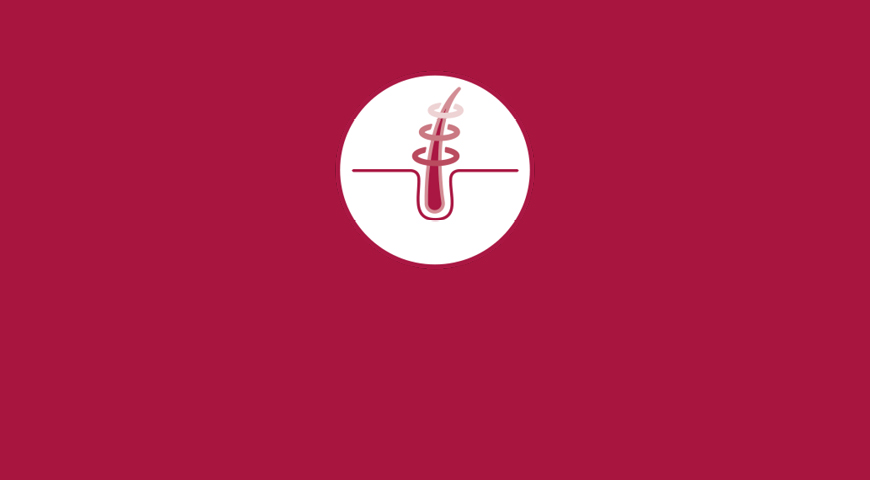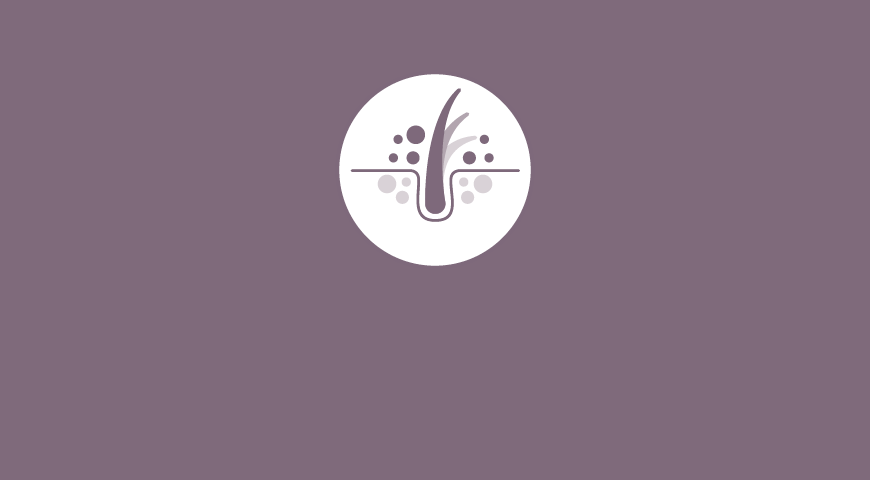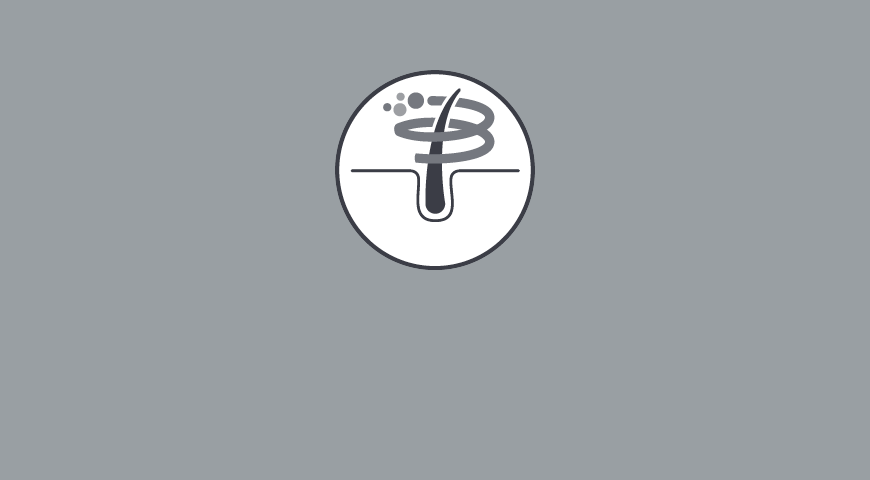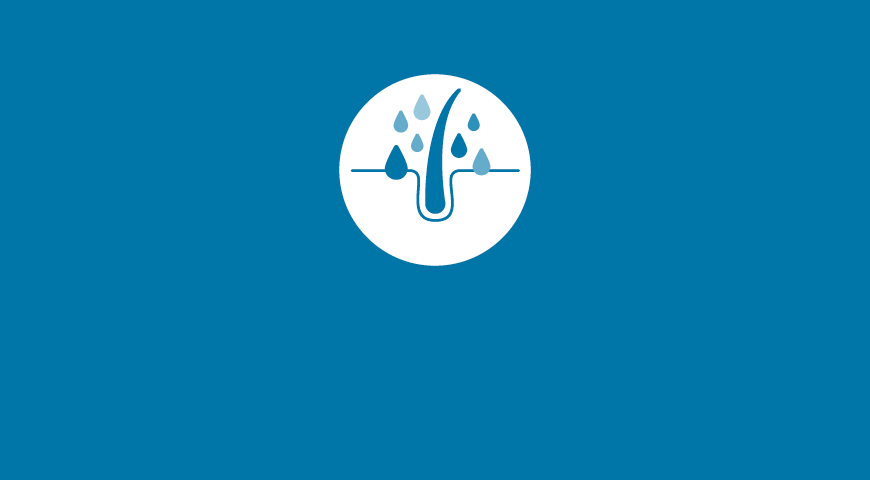HAIR CARE
Hair care constitutes a major part of taking care of ourselves. It not only makes a difference in how we are perceived from the outside but also in the way we feel about ourselves. Taking good care of your hair plays a significant role in the expression of your own individual identity and the formation of a positive self-image. It can transform your mood and boost your confidence. Whether meeting new people in a social environment or seeking to create a good impression professionally, well-maintained, healthy-looking hair helps you to feel good in your body.
With a targeted hair care routine, you can restore your hair’s vitality and shine. Revalid offers hair care products designed especially for your needs. You can choose products to nourish, revitalize, eliminate dandruff, or treat hair loss. Dermatologically tested, the entire Revalid range is subject to the highest quality standards to provide you with the best solutions for your hair care routine.
Hair Structure
Each hair grows out of a follicle; a small pocket formed when the basal layer of the epidermis grows down into the dermis.
The lower part of the follicle contains a hair bulb, which is filled with active growth cells. The hair bulb surrounds several layers that extend up through the follicle. It also contains the dermal papilla and the germinal matrix.
The papilla holds blood vessels, which supply the growing hair with oxygen and nutrients.
Surrounding the papilla is the germinal matrix, the source of hair growth. Here the cells grow rapidly and differentiate by the mitosis process of cell division, causing new hairs to grow as dead hairs fall out.
The cells are very similar to begin with. They then change shape as they move through the follicle, and start to produce and accumulate the protein, keratin. This process results in three different types of hair cells. By the time these cells are a third of the way up the follicle, they have died and fully hardened (keratinized).
Each follicle also contains a sebaceous gland, which produces an oily substance called sebum. Sebum moisturizes the hair and scalp and inhibits bacterial growth.
Directly beneath the sebaceous gland, there is a bulge at the insertion point of the arrector pili muscle. This bulge houses stem cells, which regenerate the follicle during the next hair growth cycle.
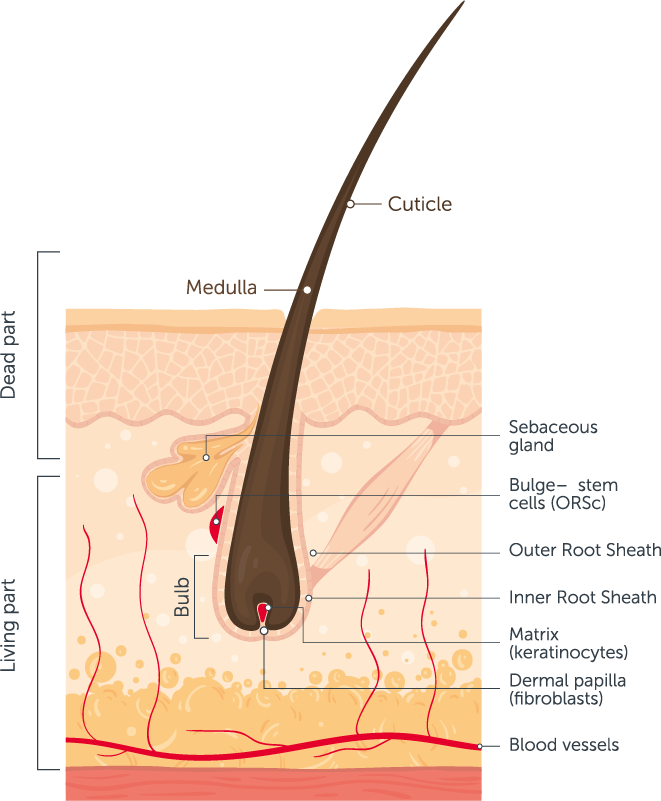
Hair Shaft
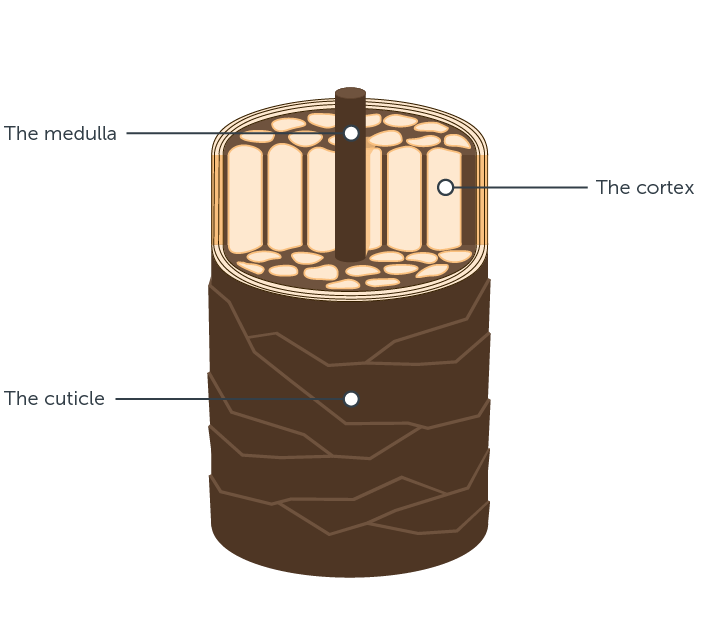
The hair shaft is the visible part of the hair that projects above the skin. The shaft has three layers: the medulla (inner layer), cortex (middle layer) and the cuticle (outer layer).
Medulla
The medulla is the innermost layer of each hair and contains a fibrous protein called keratin. Keratin is a key biological building block for our hair and lends it the necessary strength and elasticity. It also enables the hair to withstand both high and low temperatures and protects it from the sun’s rays.
Cortex
At its thickest part, the cortex makes up 75% to 90% of each hair’s volume and consists of the same fibrous protein found in the medulla, keratin. The cortex largely determines the shape, texture, colouring, and tensile strength of the hair.
Cuticle
The cuticle forms a protective layer around the cortex. It is composed of multiple layers of keratin scales, in a similar structure to a pine cone. The cuticle is thin and colourless, allowing the colour pigments in the hair to shine through.
Hair Growth Cycle
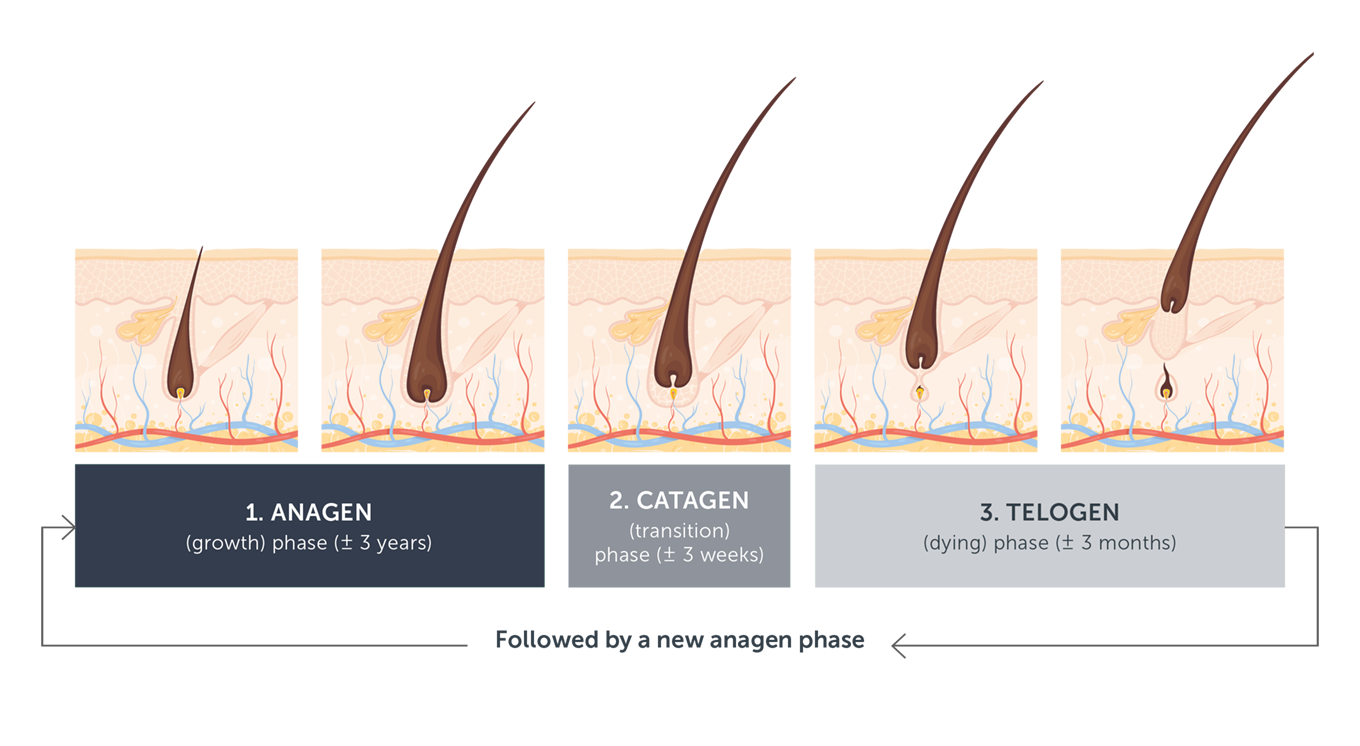
Human hair growth cycle occurs in three stages: The anagen phase, the catagen phase, and the telogen phase.
Anagen phase: The growth phase
This is the phase where a new hair root is formed, and the hair grows – on average 1cm per month. The anagen phase can last from two to six years. At any given time, 85% to 90% of the hair on your head is in this stage.
Catagen phase: The transitional phase
During this phase, which lasts two to three weeks, cell production stops. Hair growth comes to an end and the follicle shrinks. Around 1% of hair is in this transitional phase.
Telogen phase: The resting and regeneration phase
This phase lasts around 2 to 4 months, during which the follicle remains dormant and then eventually sheds the hair. Once this phase is complete, the hair follicle will re-enter the anagen phase and a new hair shaft will begin to emerge. On average, between 10% and 15% of the hair on your head is in this phase. During a period of intensive hair loss, up to 30% can be in the telogen phase.
Normally, an adult will lose up to 100 hairs a day. More frequent hair loss can come in many forms and have many causes. Diffuse hair loss is the term used for an increased rate of hair loss all over the scalp.



